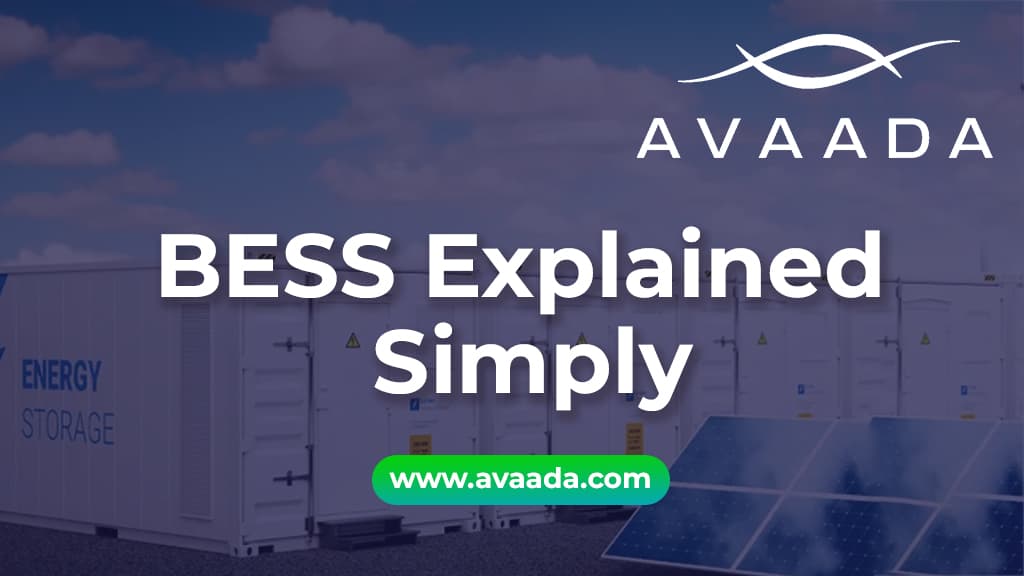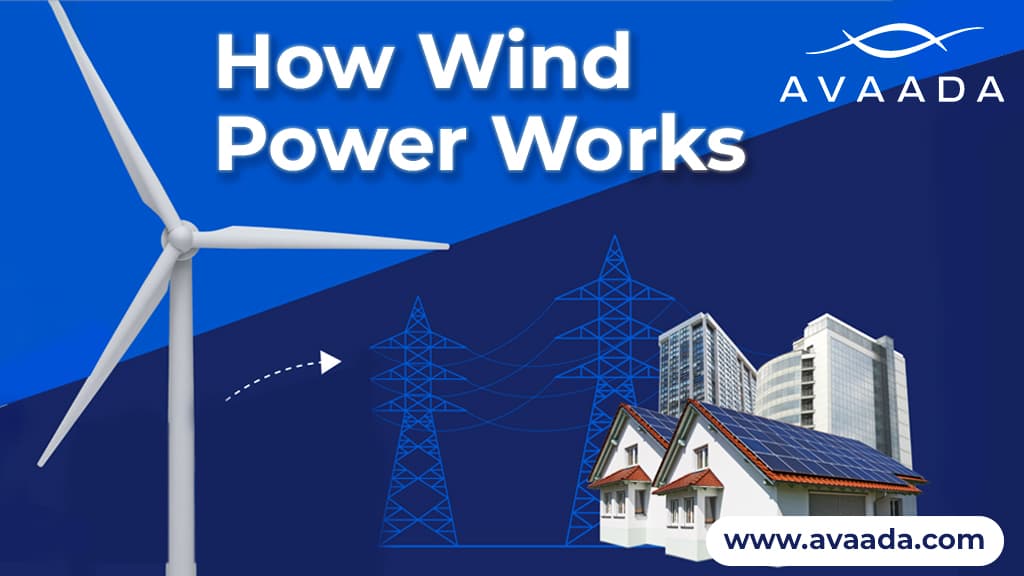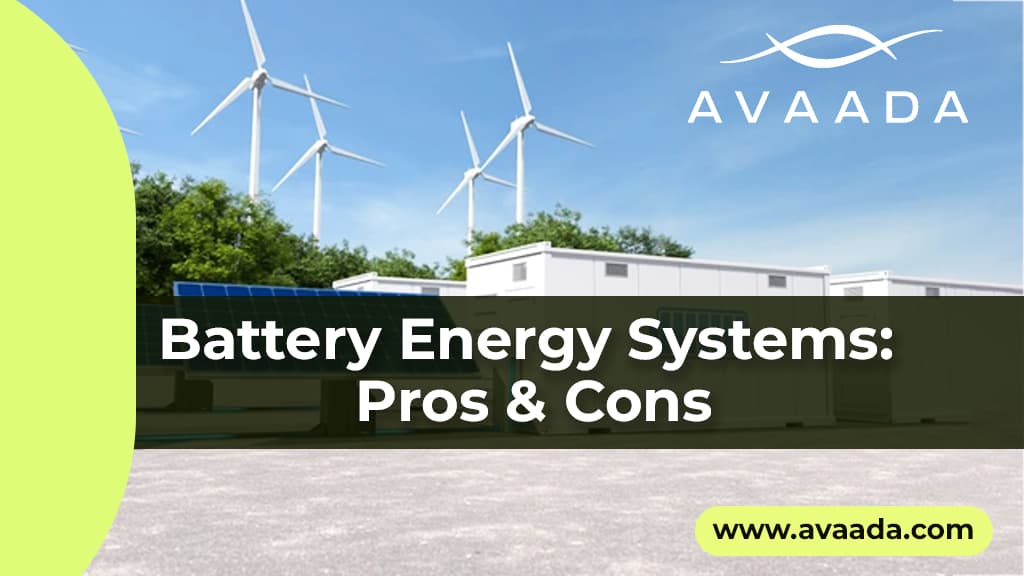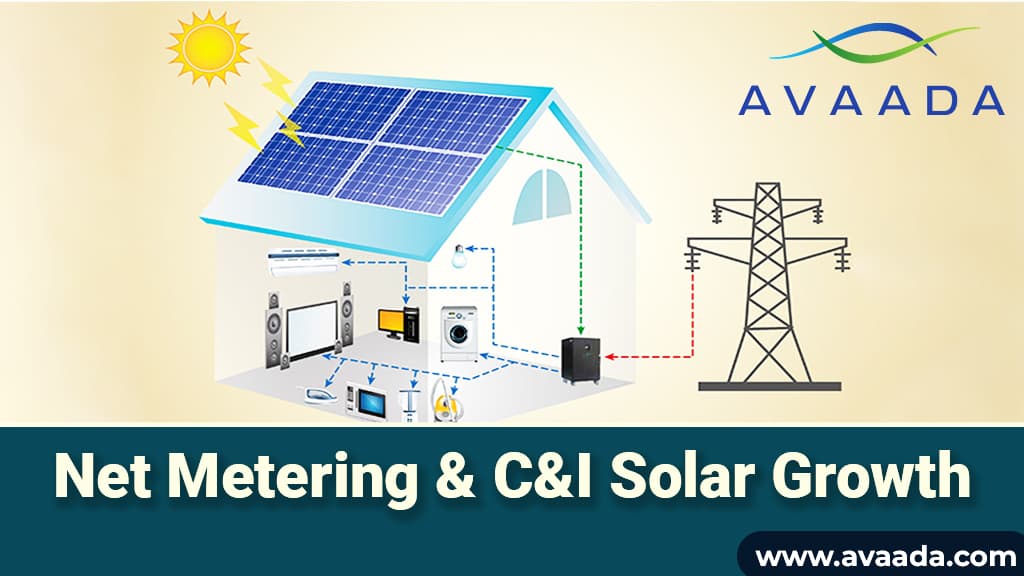As the world moves towards clean energy, there is a technology that is driving this transition like never before: Battery Energy Storage Systems (BESS). BESS not only is changing power storage but also renewable energy’s biggest challenge, intermittency.
From managing peak load demands to ensuring grid stability, BESS technology is fast becoming the backbone of a resilient, low-carbon energy future. In India, clean energy leaders like Avaada are spearheading this transition by integrating BESS into their renewable energy infrastructure.
In this blog, we’ll dive deep into what BESS is, how it works, and why it is essential for India’s clean energy mission.
What is BESS?
Battery Energy Storage Systems (BESS) are battery systems that accumulate energy from sources, mainly solar and wind, and release it when needed. As opposed to conventional means of energy storage like pumped hydro, BESS can be installed almost anywhere and is highly scalable, from small household units to grid-scale storage farms. BESS has multiple functions:
- Load balancing
- Frequency regulation
- Peak shaving
- Emergency backup power
- Excess renewable energy storage
While BESS using advanced lithium-ion technology remains capital-intensive, it is becoming more efficient and is crucial for integrating renewable energy sources.
How Does BESS Work?
A BESS process is composed of four main elements:
- Energy Input: BESS draws energy from a power station, example a solar energy station or wind farm. When there is excess electricity being produced (say, during a sunny afternoon or windy evening), instead of letting the electricity go to waste, it’s diverted into the battery system.
- Battery Modules: Energy is held in high-energy battery modules, which are primarily lithium-ion batteries due to their long lifetime and high energy density. Other emerging chemistries like lithium iron phosphate (LFP) and solid-state batteries are also gaining momentum.
- Battery Management System (BMS): BMS ensures a guarantee of safe and efficient operation of the battery system. It regulates temperature, voltage, and charge, preventing overheating or overcharging both most critical to safety and battery life.
- Inverter/Converter: The inverter converts power stored in DC to AC for supply to the grid. The Power Conversion System (including the inverter) manages bidirectional energy flow, allowing the BESS to charge and discharge as needed.
To learn more about Battery Energy Storage Systems, explore our blog on “Pros, Cons and Applications of Battery Energy Systems (BESS)“
Why is BESS Important to Renewable Energy?
Renewables from wind and sunlight are intermittent by nature; they don’t provide 24/7 power. That makes it challenging for grid stability, especially when renewable penetration increases. That’s where BESS steps in.
Grid Balancing and Frequency Regulation
BESS responds within milliseconds to variations in supply and demand, maintaining voltage and frequency on the grid. That is necessary to provide a firm supply of electricity.
Time-Shifting Energy
BESS stores excess energy generated during the day (sun) or nighttime (wind) and feeds it back during peak hours, for instance, during the evening when there is maximum demand.
Reducing Diesel Backup
At poor-grid or off-grid locations, BESS eliminates the need for diesel generators, reducing fuel costs as well as carbon footprints.
Enabling 24/7 Renewable Power
By hybridising solar and wind with BESS, we can create firm and dispatchable renewable energy (FDRE) systems—an increasingly important goal in India’s energy policy.
Avaada: Facilitating the Adoption of BESS in India
India’s clean energy transition just cannot happen without large-scale energy storage. It is for this reason that companies like Avaada are going large with Battery Energy Storage Systems to facilitate renewable infrastructure.
Avaada is designing advanced BESS solutions as an integral part of its mission to develop round-the-clock clean energy. The systems minimise variability in solar and wind energy, thereby making clean energy more predictable and dispatchable.
By deploying BESS for solar and hybrid systems, Avaada is making the grid more reliable and also is helping India with its 500 GW non-fossil fuel objective by 2030. Avaada’s drive for innovation makes it one of India’s top clean energy companies, towards a net-zero world.
Application of BESS in Real-World Applications
- Solar Energy Storage: Solar is highest in the afternoon, while demand is typically highest in the evening. BESS bridges the gap by delivering a flat power supply after sunset.
- Wind-Solar Hybrid Systems: Through the storage of wind energy produced during the night and solar energy produced during the day, BESS provides hybrid systems with a consistent supply of power.
- EV Charging Infrastructure: BESS can assist quick-charge stations with the supply of power at peak hours, reducing grid stress as well as upgrading costs.
- Island and Remote Grids: Island communities or self-sustained grids can become energy independent with the use of BESS with renewable microgrids to reduce their dependence on fossil fuels.
Learn more about the “Energy Storage – the Next Challenge in the Energy Transition”
Challenges and the Way Forward
Even though it has a number of benefits, BESS also has challenges, including:
- including high upfront costs
- battery degradation
- An evolving but still limited battery recycling ecosystem
But new technologies, facilitative policies, and scaling up investment by stakeholders such as Avaada are rapidly overcoming these challenges. India’s Production Linked Incentive (PLI) programme for advanced chemistry cells, for instance, is spurring local production and innovation in energy storage.
Conclusion
Battery Energy Storage Systems are not just backup power. They’re the backbone of a flexible, sustainable, and resilient grid. As India ramps up its clean energy push, BESS will be at the forefront of making renewables available and accessible day and night. With leaders such as Avaada actively investing in energy storage solutions, India is on its way to achieving its energy independence and climate goals.








